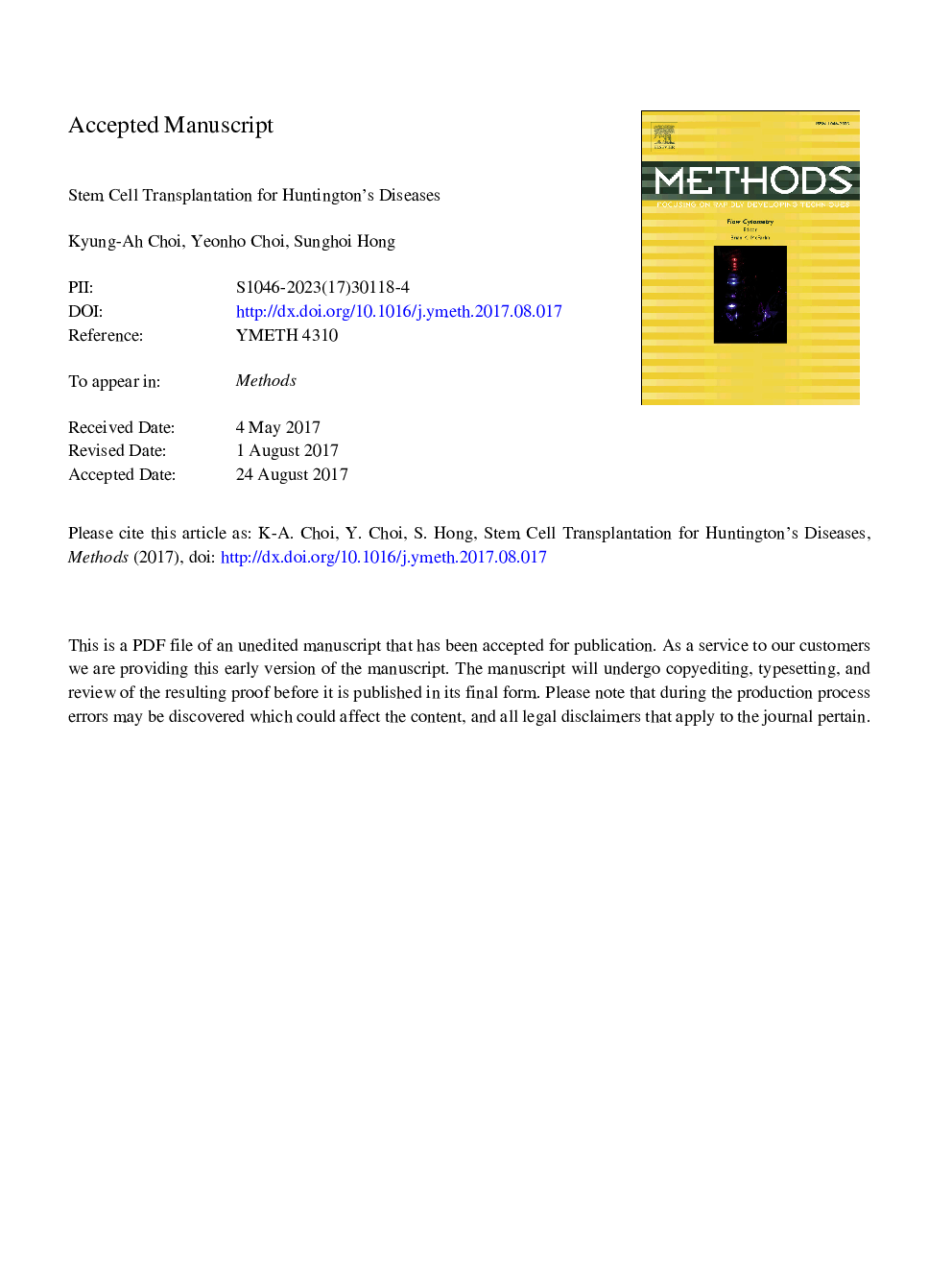| Article ID | Journal | Published Year | Pages | File Type |
|---|---|---|---|---|
| 8340145 | Methods | 2018 | 40 Pages |
Abstract
Therapeutic approaches based on stem cells have received considerable attention as potential treatments for Huntington's disease (HD), which is a fatal, inherited neurodegenerative disorder, caused by progressive loss of GABAergic medium spiny neurons (MSNs) in the striatum of the forebrain. Transplantation of stem cells or their derivatives in animal models of HD, efficiently improved functions by replacing the damaged or lost neurons. In particular, neural stem cells (NSCs) for HD treatments have been developed from various sources, such as the brain itself, the pluripotent stem cells (PSCs), and the somatic cells of the HD patients. However, the brain-derived NSCs are difficult to obtain, and the PSCs have to be differentiated into a population of the desired neuronal cells that may cause a risk of tumor formation after transplantation. In contrast, induced NSCs, derived from somatic cells as a new stem cell source for transplantation, are less likely to form tumors. Given that the stem cell transplantation strategy for treatment of HD, as a genetic disease, is to replace the dysfunctional or lost neurons, the correction of mutant genes containing the expanded CAG repeats is essential. In this review, we will describe the methods for obtaining the optimal NSCs for transplantation-based HD treatment and the differentiation conditions for the functional GABAergic MSNs as therapeutic cells. Also, we will discuss the valuable gene correction of the disease stem cells by the CRISPR/Cas9 system for HD treatment.
Related Topics
Life Sciences
Biochemistry, Genetics and Molecular Biology
Biochemistry
Authors
Kyung-Ah Choi, Yeonho Choi, Sunghoi Hong,
